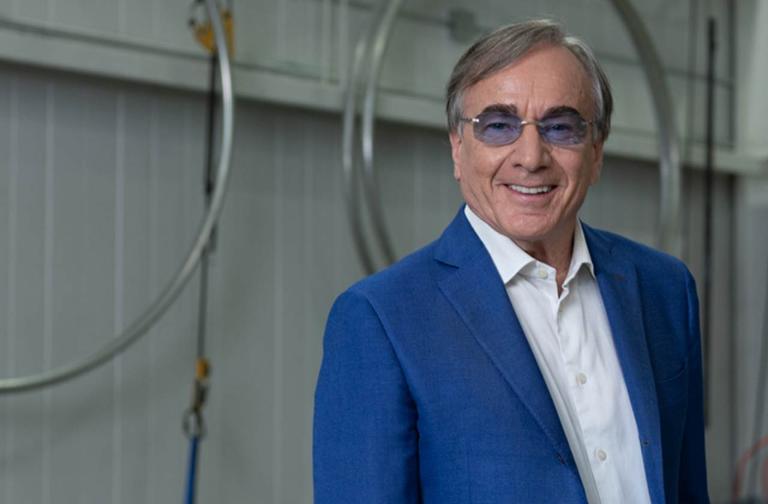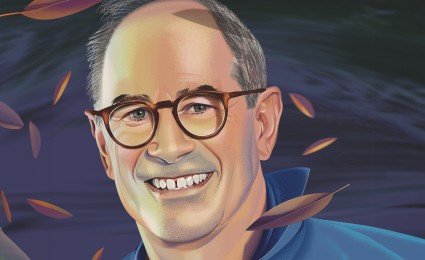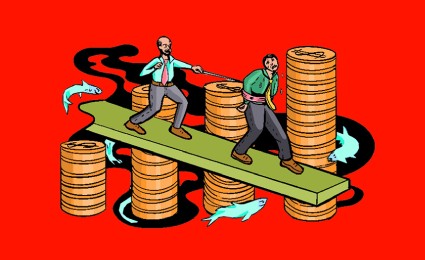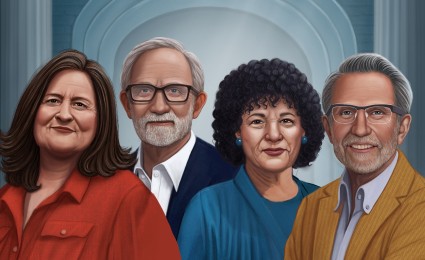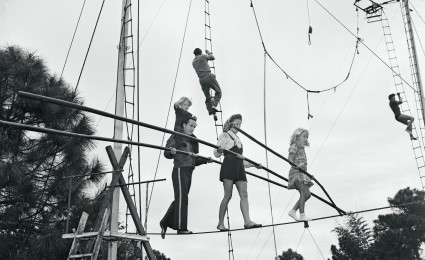Read the full, no-holds-barred interview with Cirque du Soleil’s Daniel Lamarre
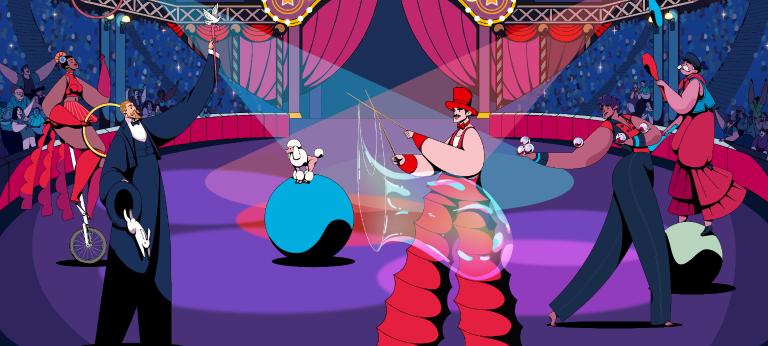

Think:Act Magazine "The Circus of Transformation"
The ultimate juggling act

Think:Act Magazine
Managing a business can be like running a circus. Roll up, roll up to gain key leadership lessons!
by Michal Lev-Ram
Illustrations by Jazzy Yuan
Organizational transformation is a delicate balancing act that requires a visionary leader in service of a skilled, dedicated team, working together to entice and enthrall customers with relevant products and services. And reinvention never stops as success demands that companies must always prepare the next daring act.
Act I – Setting the stage
In 2015, a group of investors led by private equity firm TPG bought Cirque du Soleil, the famed Canadian live entertainment group. It was an unlikely acquisition – why would a PE firm want to own a circus? – that fomented all sorts of internal turmoil and forced the brand to grapple with a new identity: Cirque du Soleil had long been known for its imaginative culture. Now it was part of an industry notorious for cost-cutting, not creativity.
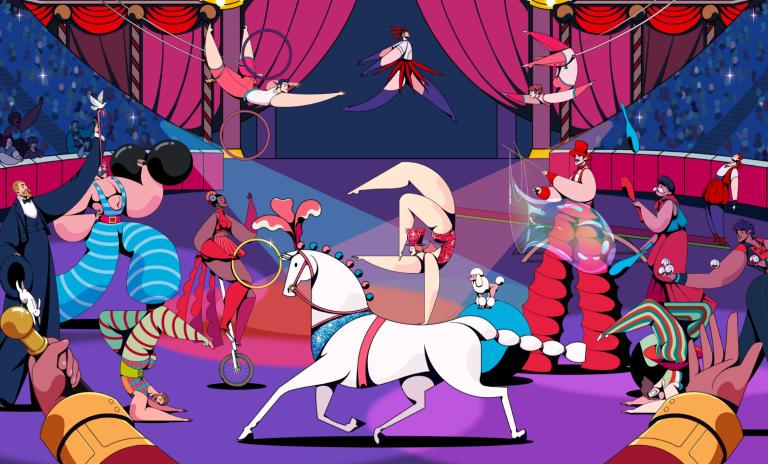
"Artists by definition are very sensitive people and they see the world differently."
The company's roots reach back into the 1970s when two street performers named Guy Laliberté and Gilles Ste-Croix, a.k.a. "The Stilt Walkers," began touring around Quebec. By 1984, they had incorporated Cirque du Soleil, hiring other performers to round out their troupe and taking on a theatrical, character-driven approach to circus shows in lieu of tigers and bears and the usual big tent fare. Cirque du Soleil started out small but soon grew into an international brand known for colorful costumes, elaborate sets and uber-talented performers ranging from contortionists to synchronized swimmers.
To this day, the company is reportedly the largest employer of former Olympic athletes. At the same time, it has developed quite a reputation for constantly reinventing itself with a growing number of traveling shows, each one pushing the envelope of what the mind – and body – can do.
Following the acquisition by TPG, though, Cirque du Soleil had to stretch itself in a new, much more uncomfortable way. Laliberté, the company's co-founder who had long served the role of its creative leader, stepped down. (Cirque du Soleil's other founder, Ste-Croix, had walked away from an operational role years before.) And in his place were a handful of new executives, most of whom were more comfortable with spreadsheets than with stilts. "Artists by definition are very sensitive people and they see the world differently," says Daniel Lamarre, who served as Cirque du Soleil's CEO from 2001 to 2021. "You have to make sure that they are surrounded with as few administrative things as possible and can focus 100% on delivering artistic content."
$375 Million: The additional amount invested in Cirque du Soleil by its creditors after they absorbed the company in 2020.
But under its new ownership, letting the creatives do their thing became more of a challenge. There were pressures to become more efficient, sometimes at the cost of artistry, and there was a push to extend the brand into arenas and partnerships that its performers and producers weren't always on board with. In short: The suddenly rapid pace of change at a company that had always prized creativity over business process made innovation hard, to say the least.
This delicate balancing act illustrates just how tough organizational transformation can be. It's also what makes Cirque du Soleil such a perfect case study for corporations undergoing change – the trade-offs between old and new, creative and analytical. There's another reason that Cirque du Soleil is a perfect metaphor for transformation, however, and that's because it is a circus.
At its core, Cirque du Soleil's product – and that's whether owned by its founder or a private equity firm – is a show that requires not only ceaseless reinvention, but also an effective circus director as well as a nimble group of performers who will keep the audience coming back for more. Behind the scenes, there's grueling practice and preparation of acts that require constant communication and alignment among all involved. (Just imagine what would happen if a pair of trapeze artists weren't in sync.) The entire ensemble must prioritize adaptability, agility, collaboration and, at times, improvisational skills. Success means always readying the next act, always stretching yourself to new heights and never accepting the status quo. And yet, all of this hard work has to fly under the audience's radar. They can't see the ropes or the security net. They just need to come along for the ride, to buy into the magic. It all has to look effortless and seamless. Even when it's not.
"It’s very tough to replicate what we do. Just think of the logistics of touring around the world."
Transformation doesn't always work. At least not in the way we expect it to. Sometimes, it's a matter of execution; other times it's a matter of timing. In early 2020, as the Covid-19 pandemic spread throughout the world, Cirque du Soleil was hit hard and fast. The circus had to shut down all of its shows, all at once. The company laid off 95% of its employees and eventually filed for bankruptcy protection. But out of the ashes a new, leaner Cirque du Soleil emerged, acquired by its creditors, who absorbed all debt and invested an additional $375 million. The company had survived its near-death experience. The big tent opened again, even if TPG was no longer its owner, and slowly rebuilt both its shows and its reputation.
Buying a circus doesn't always make for a happy ending, but the circus itself provides us with loads of lessons for how organizations can effectively – and ineffectively – transform themselves. There's not just one ingredient, but many. There's effective leadership, communication, flexibility, agility and, of course, timing. There's also a requirement to let the creatives – the artists, the innovators – do their thing and focus 100% on delivering their craft, as unencumbered by the business side's demands as possible. All of these elements matter greatly when you're putting on a show. They also matter when running a business in today's fast-changing world. Because when the curtain is drawn, or the product launched, the audience expects perfection. Anything less, and they'll go see another show.
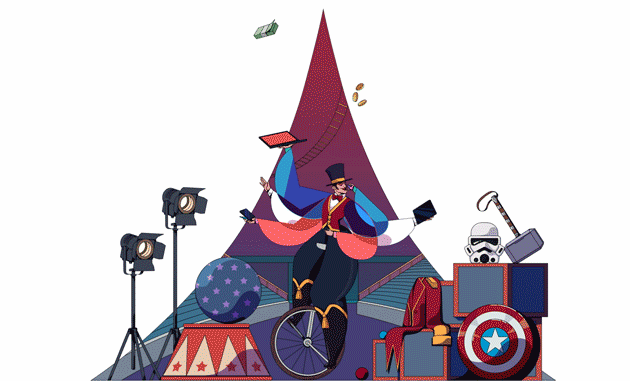
"For us, there is no star. The show is the star and the result of a collective effort."
Act II – The circus leader
Juggling acts are not just for the circus. The corporate world provides many lessons for how to balance through tricky transformations. Here's a hint: It starts at the top.
In mid-July 2023, the Walt Disney Company's board decided to extend Bob Iger's contract through the end of 2026. The two-year extension for the so-called "boomerang CEO" meant that Iger, who had also served at the helm of the 100-year-old entertainment giant from 2005 to 2020, would see Disney through yet another multiyear transformation. This time, the stakes would be even higher: The Mouse House was dealing with losses from its streaming service, declining advertising revenue and a lackluster string of movie launches. It had also entered the so-called "culture wars" following a feud with Florida Governor and American presidential hopeful Ron DeSantis after speaking out against a controversial bill that addresses gender issues in the classroom. In short, Disney was in need of a real-life hero to flip the narrative – and the business – around.
To be sure, Iger's return to the top of Disney wasn't without critics. Some argued he had failed in one key area: appointing a viable successor. And it's still too early to tell whether or not he can right the ship. But the CEO has done it before. During his first stint as the head of the conglomerate, he had breathed new life into its then-flailing film studios with the visionary acquisitions of creative powerhouses like Pixar, Marvel and Lucasfilm. He had also doubled down on technology, looking to new distribution models to help Disney reach consumers across new screens, forging a partnership with Apple and making its shows available on the iTunes store long before most other networks and studios did. It helped that Iger served on Apple's board, and former Apple CEO, the late Steve Jobs, was on Disney's board of directors.
There was also Iger's leadership style – the way he communicated, both internally and externally. This was key. It's telling that throughout his first stint as CEO, one of Iger's most trusted advisers was his communications head, Zenia Mucha, who was known for having a voice in major corporate decisions and for protecting both Iger and Disney's reputation fiercely. It wasn't just what Iger did, but how he explained it. With the help of Mucha, he chose his words thoughtfully, whether hyping the latest lineup of Star Wars movies or consoling a family that lost their toddler to an alligator attack at Walt Disney World. It wasn't that Iger never made a wrong call. But mistakes were rare and he seemed to perfect the balancing act that makes so many other CEOs topple: exuding an air of resoluteness untainted by rigidity, an aura of compassion that conveyed strength, not softness, and importantly, ushering Disney into the modern era without erasing its past.
$5.5 Billion: The total costs Disney will save as part of a restructuring announced in 2023, including cutting 7,000 jobs that represent an estimated 3.6% of Disney's global workforce.
For all of these reasons, Iger's return to the top job at Disney was overwhelmingly lauded and his contract extension even more so. In a report that came out shortly after the news was announced, Doug Creutz, an analyst from TD Cowen, called Iger "the indispensable man," even as he outlined the "structural" challenges at the company which are "not easily solved."
What happens next? Iger has already cleaned house, laying off a whopping 7,000 employees, announcing cost cuts totaling $5.5 billion and, notably, restructuring the company in an effort to return more control to creative teams. Creative leaders are now accountable for how their content performs financially and have a say over what content is made, how it’s distributed, monetized and marketed. Iger had reportedly said that Disney was "losing its soul" during his predecessor’s brief tenure. Now, the CEO has two more years to get it back – and transform the company once again.
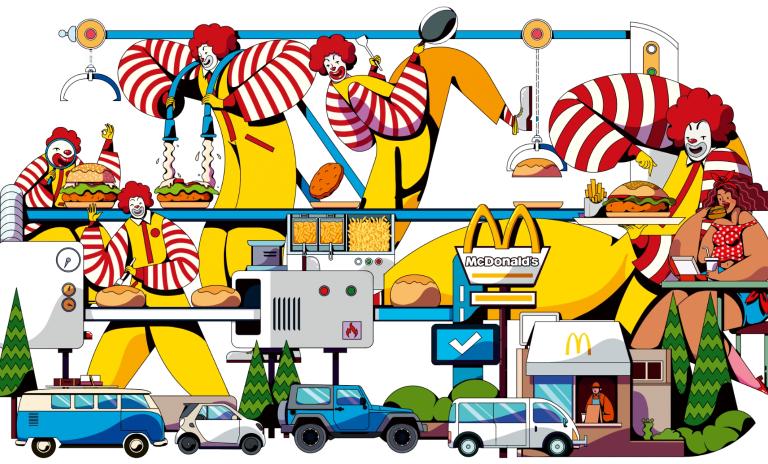
Act III – Send in the clowns
The art and science of corporate transformation has been studied by academics for decades now. In his pivotal 1997 book The Innovator's Dilemma, the late Harvard Business School professor Clayton Christensen advised large companies to maintain small, nimble teams that could embrace "disruptive technologies." Shortly after, "design thinking," an iterative product development process that challenges assumptions about what consumers want and need, began making waves in corporate circles, with companies from consumer-packaged goods to health care experimenting with the methodology.
One of design thinking's biggest proponents, David Kelley, helped design Apple Computer's first mouse. His consulting firm, IDEO, was enlisted by large companies across different industries as they attempted to rethink both their products and processes – and not get left behind by an increasing number of fast-moving tech companies. Kelley, who also co-founded the Hasso Plattner Institute of Design at Stanford University (commonly known as the d. school), liked to tell his students that "enlightened trial and error succeeds over the planning of flawed intellects."
Enlightened trial and error necessitates hiring people who are comfortable with failure, yet this wasn't a core part of the talent base at most large corporations. Neither were employees who push the status quo. "Ideas are the lifeblood of a high-growth company," says Atif Rafiq, the first chief digital officer in the history of the Fortune 500. Rafiq rose through the ranks at digital native companies like Amazon, Yahoo! and AOL. His first non-tech role was at McDonald's, where as the chief digital officer he was tasked with rethinking how the fast food giant engages with customers and employees, utilizing technology in ways it hadn't explored. "McDonald's is a company that's been around for a long time and has been very successful," says Rafiq. "Sometimes they looked at new ideas as a defect – if it doesn't work out, it could end up breaking something that does work."
Indeed, McDonald's had long prided itself on near-flawless execution. From its supply chain to its customer service, the company had it down. There was little deviation from the established processes. And where there was alteration, it usually meant there were mistakes.
"Sometimes they looked at new ideas as a defect – if it doesn't work out, it could end up breaking something that does work."
In order to get the company more comfortable with change (and even with the occasional error), Rafiq hired hundreds of new employees. Many of those came from the tech industry, where the product development process has been likened to throwing spaghetti on the wall and seeing what sticks. "I was trying to help these companies act like Amazon, to create a culture that is comfortable with innovation," says Rafiq.
Bringing in new blood, however, didn't mean embolizing old arteries. Rafiq says that while the companies he's worked for – not just McDonald's but also Volvo, MGM and others – wanted him to usher them into the digital era, he had to approach that process with respect for what came before. "I had to position what my team was doing in familiar terms," says Rafiq. "Instead of digitization, I talked about convenience."
When Rafiq joined McDonald's, for example, he says there were three main ways the company sold hamburgers and fries and other products to its customers: going through the drive-through, getting in line and sitting down to eat or buying a bag of food and taking it home. Rafiq got buy-in to create additional models for serving customers not by espousing the whiz-bang merits of a technology-first approach, but by making a case for customers. Ordering through an app was convenient, not just cutting-edge. "You have to create a desire or hunger for the upside of new ideas," says Rafiq, who has also recently published a book called Decision Sprint: The New Way to Innovate into the Unknown and Move from Strategy to Action.
Over the years, the longtime tech executive has hired and led thousands of employees across new, innovative departments at non-tech companies, starting with McDonald's. But Rafiq says getting buy-in from existing employees was just as important and key to success. "You have to connect the dots between the new technologies and innovations and the heritage of these companies, and that's hard," says the executive-turned-author. This kind of transformation might prove to be difficult, especially for companies with legacy businesses, but it's also increasingly necessary. Technologies like generative AI are evolving at a faster-than-ever pace, and corporations across every industry are scrambling to adopt these in an impactful way. This is no longer a nice-to-have: It's a must-have. And in an age of economic uncertainty, this work needs to be strategic and thoughtful. Nowadays, throwing spaghetti at the wall doesn't even work for Google.
The new path to innovation requires bold risks, yes. But not at any cost. "We're now in a situation where every company is facing two pressures: Shareholder value is all about 'new' things, and the other thing we're facing is austerity," says Rafiq. "The innovation work of companies needs to be purposeful." And that's not just the case for the incumbents like McDonald's. Newer tech players are also having to be more thoughtful about how they innovate, even as they find themselves pushed to move faster than ever.
How a pivot-prone tech startup like Airbnb found a response to sudden and fundamental shifts in its business model.
At the onset of the pandemic, vacation rental site Airbnb was on the brink of disaster. Within eight weeks, the company's business had dropped 80%, as travelers everywhere canceled trips. Under CEO Brian Chesky's leadership, Airbnb pivoted, and fast.
Suddenly more than half of Airbnb’s bookings were within driving distance of where renters lived. In response, the company adjusted its recommendation engine to populate searches with more local stays. It also highlighted features that people who were newly working from home – or from their rental – cared about, like dependable Wi-Fi.
It wasn't necessary for Airbnb to invest in new, cutting-edge tech tools to transform its business, though data and AI certainly played a role in rejiggering its algorithms. Rather, its CEO and its people had to know to ask the right questions, listen to the answers and, of course, act quickly to respond.
Act IV – Bringing the audience along
Performers know right away whether or not their material is landing. Increasingly, feedback from customers is coming at corporations just as rapidly – in real time. And pleasing these customers is harder than ever. Not only do they want superior products, they also want products with purpose. Products they can trust and believe in. But how do brands transform themselves into makers of goods that, well, make people feel good?
The answer starts with clarity and authenticity, a leader who's willing to put in the work of figuring out what is and isn't core to the particular values of a particular company. Another key ingredient is transparency, both with employees and customers. And that includes coming clean when mistakes are made. Without transparency, it's hard to earn the buy-in of both internal and external stakeholders – especially when trying to bring about change.
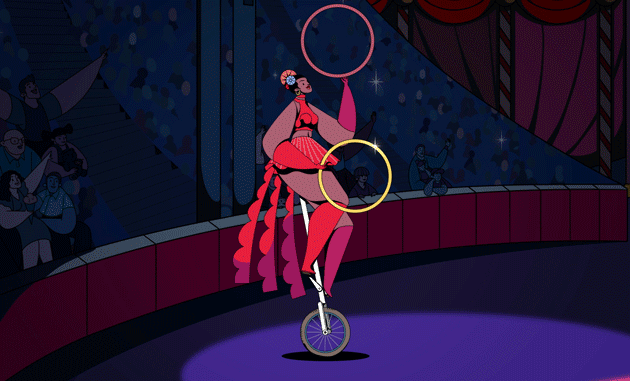
Look at General Motors, which has been under the leadership of CEO Mary Barra since 2014. The first female CEO of a major American automaker, Barra spent her career at GM and was elevated to the top job at a particularly tough time for the company: A faulty ignition switch was linked to over 100 deaths and many more injuries. The CEO not only had to recall millions of vehicles and pay a $900 million fine to the US Justice Department as part of a settlement agreement, she also had to be transparent with customers and employees, tackling a culture which she knew had helped brush the product defect under the rug – a culture she herself had been a part of. "I never want to put this behind us," she told employees during a town hall that took place shortly after GM settled with the US government. "I want to put this painful experience permanently in our collective memories."
Barra apologized publicly multiple times, set up a compensation fund for the families of victims and fired those she felt were directly responsible for the tragedy, executives who had known about the faulty car part but kept it secret. Through it all, she prioritized "candor, cooperation, transparency and compassion" and normalized accountability. She answered questions about the tragedy often and openly, whether in front of Congress or the press or her own employees, customers and investors.
$11 Billion: The annual capital expenditures GM is planning through 2025 to put in place the manufacturing infrastructure to build 1 million EVs annually in North America.
General Motors emerged from its ignition switch crisis with a culture that valued clearer communication, even when relaying bad news. And soon enough, a new era was upon the auto industry, one that required a different sort of transformation and that would test Barra's mettle again. Only this time, she'd proven her ability to set goals, communicate them clearly and live up to her words.
In 2021, Barra made the announcement that GM would exclusively sell electric vehicles by 2035. For a company that had been around since 1908, this was a monumental shift from the long-held norm. And because Barra had built a reputation of transparency, with few exceptions her ambitious goals were lauded. Going electric wasn't just good for the environment, it was good for business, she argued. The CEO, who had also invested in autonomous vehicle technology, told investors that this new strategy would help the carmaker double its revenue by the end of the decade, all while expanding its margins. But her pitch to GM's other stakeholders was even more ambitious. "Our role at General Motors is not just to direct our own company's transformation," she said in a release announcing the new goals. "It is to lead and influence others. To set the standards that others will follow. To take everybody on the journey to a safer, more equitable, all-electric future. We've changed the world before and we're doing it again."
Act V – Lining up the next act
Not all companies are capable of transformation. For every General Motors, there is probably a Nokia or a Kodak — brands that once reigned supreme, only to wither into the background. Even circuses can fall prey to stagnation and irrelevance, either because of poor timing or unenlightened leadership, failing to respond to changing customer tastes, a lack of communicating clear strategy to internal and external stakeholders, or all of the above.
In 2017, The Ringling Brothers and Barnum & Bailey circus came to a halt after 146 years on the road following declining ticket sales that were at least partly due to growing concern over the treatment of circus animals. But "The Greatest Show on Earth," as it calls itself, will soon be back, sans animals, in an attempt to revive its brand under new ownership – with an evolved mission: "The Greatest Show On Earth will debut stunning feats of real human achievement, musical performances blended with aerial artistry, modern comedy and never-before-seen acts on high wire, trapeze, bicycles and more," said the company in a March 2023 press release. "The reimagined American icon will captivate families through a multiplatform, 360-degree experience that brings fans into the action, creating real connections between audiences and performers from all over the world."
If the description above sounds a lot like the premise behind Cirque du Soleil, that's because it is. But just because this is a winning formula for one company doesn't mean it will be for another. Again, authenticity and timing are tantamount, as are communication and leadership and talent. There are many pieces that must come together to truly transform an organization, much more than a press release.
You have to hand it to the Ringling Brothers – or Feld Entertainment, its new owner – for trying. There's a lot to learn from the tenacity of the circus business, the ability to create and produce and perform. The drive to relentlessly reinvent itself, even in the face of failure. If there's one thing we've learned from the big tent business, it's that the show must go on.

The circus of transformation
![{[downloads[language].preview]}](https://www.rolandberger.com/publications/publication_image/ta41_en_cover_download_preview.jpg)
Think:Act Magazine features experts and authors on topics including company reinventions, ethical business, resilience and innovation strategies.



